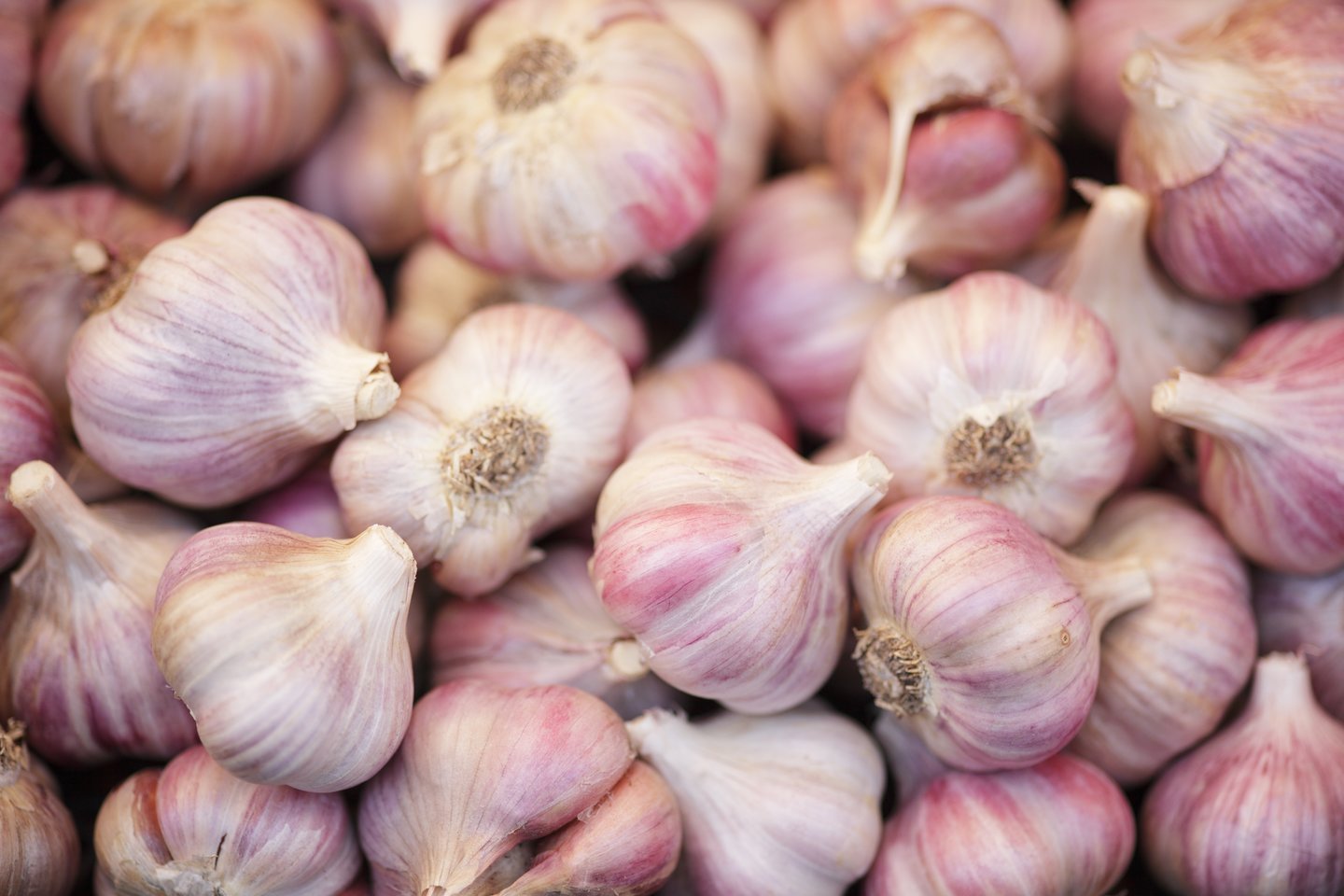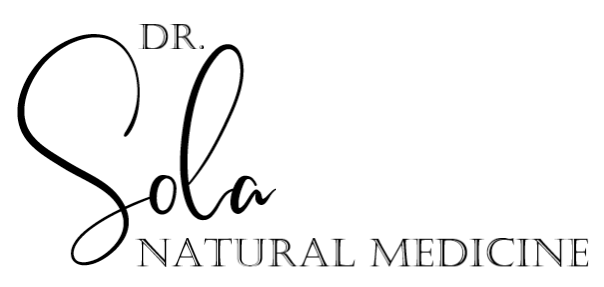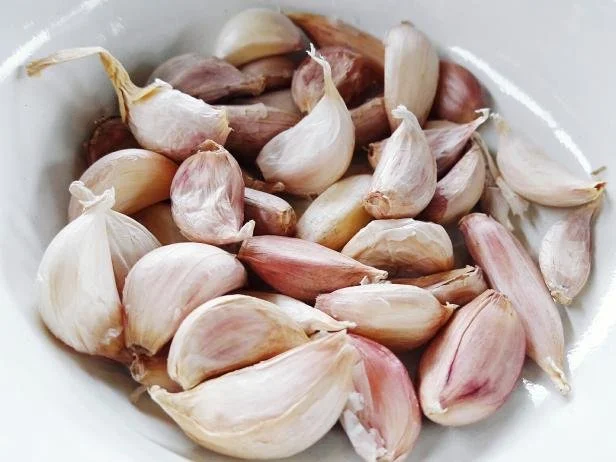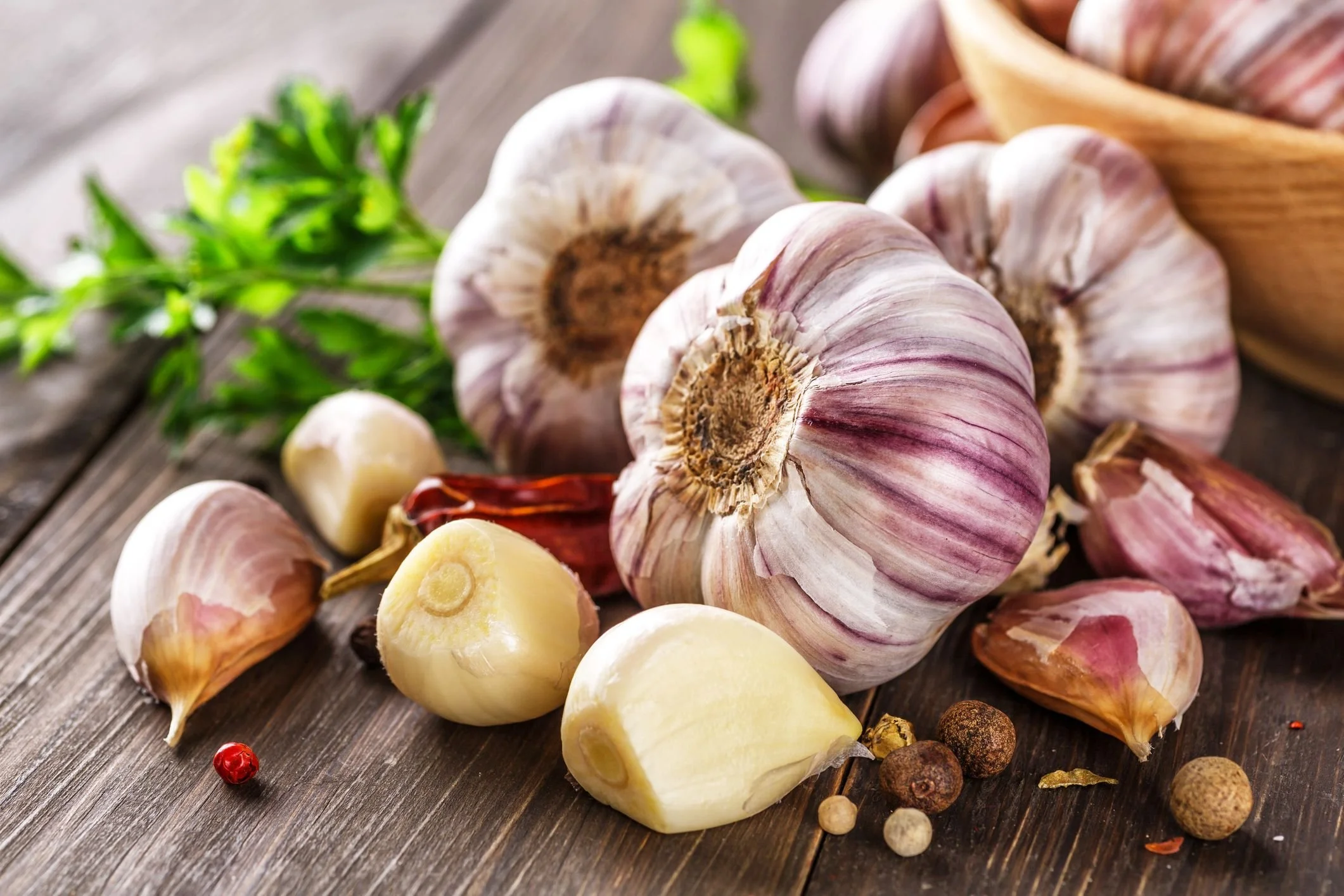
Allium sativum
Common Name: Garlic
Family: Liliaceae (Lily family)
Parts used: Clove
Constituents: Glucosinolates (allicin), thiosulfinates, etc.
Taste/smell: Pungent, warm
Tendencies: Heating, stimulating, and drying
Actions
Anti-atherosclerotic
Hypotensive
Hypolipidemic
Antiplatelet
Antidiabetic
Antimicrobial
Anti-H. pylori
Immunomodulating
Anthelmintic/Antiparasitic/Vermifuge
Diuretic/Natriuretic (increases sodium excretion in urine)
Diaphoretic
Anticancer
Hepaprotective/Cholagogue
Carminative
Uses
Anti-atherosclerotic:
Atherosclerosis
Ischemic stroke prevention
Hypercoagulable states
Angina pectoris
Impotence (from arterial insufficiency)
Erectile dysfunction
Hypotensive:
Hypertension
Hypolipidemic:
Hyperlipidemia
Dyslipidemia
Hypercholesterolemia
Intermittent claudication
Anti-Diabetic:
Type 2 diabetes mellitus
Antimicrobial:
Garlic exhibits a broad antibiotic spectrum against gram-positive and gram-negative bacteria (H. pylori)
Viral and bacteria respiratory tract infections
Diarrhea due to intestinal bacteria
Anthelmintic/Antiparasitic/Vermifuge:
Pinworms
Roundworms
Hookworms
Tapeworms
Entamoeba histolytica infections
Giardiasis
Mental Picture and Specifics
Garlic stimulates digestion and cardiovascular circulation. It is indicated for dyspepsia, hypertension, arthritic pain and individuals with catarrhal affections. The tongue is pale with red papillae.
Contraindications
Bleeding diathesis due to its antiplatelet activity
Bleeding disorders
Concomitant use with anticoagulant drugs
Thyroid disease (high doses may inhibit thyroid uptake of iodine and cause problems in people if they have marginal iodine intake, which is very rare in the US)
Gastrointestinal disturbances in sensitive individuals
Individuals with hot constitutions
Acute inflammation
Insomnia
Dehydration
Hypoglycemia/brittle diabetes
Pemphigus
Impending surgery
Organ transplants
Adverse Effects
Breath and body odor
Bleeding at excess doses
Toxicity
Antiplatelet activity
Interactions
Can potentiate anticoagulants due to platelet-inhibiting effects
Can potentiate insulin (inhibits its breakdown) and hypoglycemic drugs
References:
Brinker, Francis J. Herbal Contraindications and Drug Interactions plus: Herbal Adjuncts with Medicines. Eclectic Medical Publications, 2010.
Kaufmann, Taylor. NPLEX II Study Guide. Wild Brilliance Press, 2019.
Lun, Vincent, et al. Core Knowledge for NPLEX 2. 1st ed., Marano Publishing Incorporated, 2014.
Marciano, Marisa, and Nikita A. Vizniak. Evidence Informed Botanical Medicine. Professional Health Systems Inc., 2015.
Sherman, John. The Complete Botanical Prescriber. Four Seasons Pub.
Skenderi, Gazmend. Herbal Vade Mecum: 800 Herbs, Spices, Essential Oils, Lipids, Etc., Constituents, Properties, Uses, and Caution. Herbacy Press, 2004.
Tilgner, Sharol. Herbal Medicine: From the Heart of the Earth. Wise Acres, 2020.








